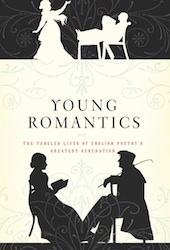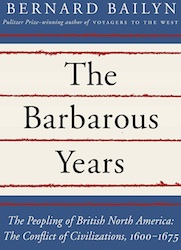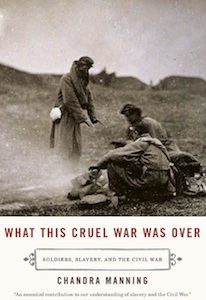Smithsonian Curators Offer Up a Holiday Gift Guide for History Lovers
The best of history reads from Lincoln’s true thoughts on slavery, to the White House dinner that shocked a nation, to California’s hip-hop scene
![]()

Last week’s holiday gift guide had a little something for everyone: science lover, wordsmiths, artsy types and history buffs. But this week, we’re bringing you the unabridged list of history picks, each of which were recommended by researchers, curators and staff at the Institution so they’ve got the smarty stamp of approval.
So stop sneezing over perfume samples and sorting through silk ties, this list of more than 30 titles, from hip-hop history for newcomers to the Civil War canon, is all you’ll need this holiday season.
Biography
Cleopatra: A Life by Stacy Schiff. The Pulitzer Prize-winning biographer delivers a dramatic account of one of the most famed but misunderstood women of all time. The New York Times called it “a cinematic portrait of a historical figure far more complex and compelling than any fictional creation, and a wide, panning, panoramic picture of her world.” (Recommended by Laurel Fritzsch, project assistant at the Lemelson Center for the Study of Invention and Innovation)
The Lost World of James Smithson: Science, Revolution, and the Birth of the Smithsonian by Heather Ewing. Learn more about this British chemist and the Institution’s founder, who left his fortunes to a country he’d never even set foot in, all in the name of science and knowledge. (Recommended by Robyn Einhorn, project assistant for armed forces history at the American History Museum)
 Young Romantics: The Tangled Lives of English Poetry’s Greatest Generation by Daisy Hay. In addition to the celebrated figures of Lord Byron, Mary Shelley and John Keats, Hay’s book also weaves in mistresses, journalists and in-laws for a riveting tale of personal drama. (Recommended by Laurel Fritzsch, project assistant at the Lemelson Center for the Study of Invention and Innovation)
Young Romantics: The Tangled Lives of English Poetry’s Greatest Generation by Daisy Hay. In addition to the celebrated figures of Lord Byron, Mary Shelley and John Keats, Hay’s book also weaves in mistresses, journalists and in-laws for a riveting tale of personal drama. (Recommended by Laurel Fritzsch, project assistant at the Lemelson Center for the Study of Invention and Innovation)
Genius of Place: The Life of Frederick Law Olmsted by Justin Martin. “Olmsted did so many different things in life, that it’s like reading a history of the country to read about him,” says the Institution’s Amy Karazsia. Not just the landscape architect behind everything from Central Park to Stanford University, Olmsted was also an outspoken abolitionist, whose social values informed his design. (Recommended by Amy Karazsia, director of giving at the American History Museum)
Crockett Johnson and Ruth Krauss: How an Unlikely Couple Found Love, Dodged the FBI, and Transformed Children’s Literature by Philip Nel. Not as famous as their mentee Maurice Sendak, Johnson and Krauss lived just as colorful a life creating children’s classic, including Harold and the Purple Crayon, that endure even today. (Recommended by Peggy Kidwell, curator of medicine and science at the American History Museum)
American History
Big Chief Elizabeth: The Adventures and Fate of the First English Colonists in America by Giles Milton. A look at some of the first settlers, including a Native American who had been taken captive, traveled to England and then returned to America as Lord and Governor before disappearing. Milton unravels the mystery of what happened to those early settlers. (Recommended by Carol Slatick, museum specialist at the American History Museum)
 The Barbarous Years: The Peopling of British North America: The Conflict of Civilization, 1600-1675 by Bernard Bailyn. The Pulitzer Prize-winning author who has written profusely on early American history here turns his eye to the people already on North America’s shores when the British arrived and their interactions with the colonists. (Recommended by Rayna Green, curator of home and community life at the American History Museum)
The Barbarous Years: The Peopling of British North America: The Conflict of Civilization, 1600-1675 by Bernard Bailyn. The Pulitzer Prize-winning author who has written profusely on early American history here turns his eye to the people already on North America’s shores when the British arrived and their interactions with the colonists. (Recommended by Rayna Green, curator of home and community life at the American History Museum)
Revolutionary Characters: What Made the Founders Different by Gordon S. Wood. For those who think they have the complete picture of the founding fathers, allow Pulitzer Prize-winning author Gordon S. Wood to fill in the details and explain what made each unique. (Recommended by Lee Woodman, senior advisor for the office of the director at the American History Museum)
Empire of Liberty: A History of the Early Republic, 1789-1815 by Gordon S. Wood. And for those who like their Pulitzer Prize winners to take a broader look, Wood’s Empire of Liberty examines the larger context in which those greats from his Revolutionary Characters worked. (Recommended by Timothy Winkle, curator of home and community life at the American History Museum)
Six Frigates: The epic history of the founding of the US Navy, by Ian W. Toll. Our Smithsonian recommender wrote that this book is a, “real page-turner about the politics surrounding the creation of a navy, the shipbuilding process, the Navy culture of the time, characteristics of each ship and the characters who served on them,” from the War of 1812, the Mediterranean naval actions and more. (Recommended by Brett Mcnish, supervisory horticulturalist at Smithsonian Gardens)
The Burning of Washington: The British Invasion of 1814 by Anthony Pitch. The story of how Dolly Madison rescued George Washington’s portrait from the White House when it was engulfed in flames during the British attack is by now common classroom stuff. But Pitch breathes new life into the now quaint tale, delivering a gripping account of the actions as they unfolded. (Recommended by Cathy Keen, archives curator at the American History Museum)
 What This Cruel War Was Over: Soldiers, Slavery, and the Civil War by Chandra Manning. We remember the Civil War through the words of famous men, but Manning returns the struggle’s voice to those who fought, including both black and white soldiers as she pulls from journals, letters and regimental newspapers. (Recommended by Barbara Clark Smith, curator of political history at the American History Museum)
What This Cruel War Was Over: Soldiers, Slavery, and the Civil War by Chandra Manning. We remember the Civil War through the words of famous men, but Manning returns the struggle’s voice to those who fought, including both black and white soldiers as she pulls from journals, letters and regimental newspapers. (Recommended by Barbara Clark Smith, curator of political history at the American History Museum)
The Fiery Trial: Abraham Lincoln and American Slavery by Eric Foner. Though we learn more about the man every year, Abraham Lincoln’s true relationship to the issue of slavery remains buried somewhere between pragmatism and indignation. This account from the Pulitzer Prize-winning Foner brings out the nuance of the full conversation, not shying away from the difficult and sometimes contradictory parts. (Recommended by Arthur Molella, director of the Lemelson Center for the Study of Invention and Innovation)
Destiny of the Republic: A Tale of Madness, Medicine, and the Murder of a President by Candice Millard. The best-selling book just released in June details the attempted assassination of President Garfield in 1881. Full of intrigue, the book found fans in the Smithsonian partly because the apparatus Alexander Graham Bell used to find the bullet which wounded the President is actually in the collections. (Recommended by Roger Sherman, curator of medicine and science for the American History Museum)
Guest of Honor: Booker T. Washington, Theodore Roosevelt and the White House Dinner That Shocked a Nation by Deborah Davis. Though enslaved African Americans built the White House, none had ever dined there until Booker T. Washington was invited to by President Roosevelt. The incredibly controversial dinner engulfed the country in outrage but Davis places it within a larger story, uniting the biographies of two very different men. (Recommended by Joann Stevens, program director of Jazz Appreciation Month at the American History Museum)
Freedom Summer: The Savage Season of 1964 That Made Mississippi Burn and Made America a Democracy by Bruce Watson. Racism consumed the entire nation, but the Student Nonviolent Coordinating Committee chose Mississippi as one of the worst offenders. A modest army of hundreds of students and activists went to the state to man voter registration drives and fill the schools with teachers. Though the summer produced change, it also witnessed the murder of three young men whose deaths would not be solved until years later. (Recommended by Christopher Wilson, program director of African American culture at the American History Museum)
The Years of Lyndon Johnson by Robert Caro. This four-volume monolith by the Pulitzer Prize winning Robert Caro runs more than 3,000 pages and yet it captured the adoration of nearly every reviewer for its painstakingly thorough and engaging biography of a complicated man and era. (Recommended by Rayna Green, curator of home and community life at the American History Museum)

Social History
Battle Cry of Freedom: The Civil War Era by James McPherson. As Alex Dencker says, this is, “not a typical Civil War book.” McPherson deftly handles the Civil War while also creating a portrait of what made America unique, from its infrastructure, to its agriculture to its populations, to set the stage in a new way. (Recommended by Alex Dencker, horticulturalist at Smithsonian Gardens)
 City of Scoundrels: The 12 Days of Disaster That Gave Birth to Modern Chicago by Gary Krist. July 1919 proved particularly eventful in Chicago, with a race riot, the Goodyear blimp disaster and a dramatic police hunt for a missing girl. Krist looks beyond the buzz of headlines to capture a city in transformation. (Recommended by Bonnie Campbell Lilienfeld, supervisor curator of home and community life at the American History Museum)
City of Scoundrels: The 12 Days of Disaster That Gave Birth to Modern Chicago by Gary Krist. July 1919 proved particularly eventful in Chicago, with a race riot, the Goodyear blimp disaster and a dramatic police hunt for a missing girl. Krist looks beyond the buzz of headlines to capture a city in transformation. (Recommended by Bonnie Campbell Lilienfeld, supervisor curator of home and community life at the American History Museum)
Harvest of Empire: A History of Latinos in America by Juan Gonzalez. A revised and updated edition of a comprehensive work from columnist Juan Gonzalez provides a contemporary look at the long history of a diverse group whose national profile continues to rise. (Recommended by Magdalena Mieri, program director in Latino history and culture at the American History Museum)
The Good Girls Revolt: How the Women of Newsweek Sued their Bosses and Changed the Workplace by Lynn Povich. Valeska Hilbig, from the American History Museum, loved the way this book, “as compelling as any novel,” also provided “an accurate, intimate history of new women journalists invading the male journalistic world of the 1970s” to reveal how women’s struggle for recognition in the workplace may just be beginning. (Recommended by Valeska Hilbig, public affairs specialist at the American History Museum)
At Home: A Short History of Private Life by Bill Bryson. If you happen to, like Bill Bryson, live in a 19th century English rectory, you might assume your home is full of history. But Bryson shows us, in addition to touring his own home, that these private and often ignored spaces hold the story of human advancement. (Recommended by Laurel Fritzsch, project assistant at the Lemelson Center for the Study of Invention and Innovation)
Science History
Poisons of the Past: Molds, Epidemics, and History by Mary Kilbourne Matossian. Could food poisoning have been at the heart of some of Europe’s strangest moments in history? That’s what Matossian argues in her look at how everything from food preparation to climate may have shaped a region’s history. (Recommended by Carol Slatick, museum specialist at the American History Museum)
 Greek Fire, Poison Arrows & Scorpion Bombs: Biological and Chemical Warfare in the Ancient World by Adrienne Mayor. An easy read that looks at the often dark and very long history of biological warfare, using everything from Greek mythology to evidence from archeological dig sties. (Recommended by Carol Slatick, museum specialist at the American History Museum)
Greek Fire, Poison Arrows & Scorpion Bombs: Biological and Chemical Warfare in the Ancient World by Adrienne Mayor. An easy read that looks at the often dark and very long history of biological warfare, using everything from Greek mythology to evidence from archeological dig sties. (Recommended by Carol Slatick, museum specialist at the American History Museum)
The Republic of Nature: An Environmental History of the United States by Mark Fiege. In a sweeping history, Fiege persuasively argues that no moment in time can be separated from its environment, brining together natural and social history. (Recommended by Jeffrey Stine, supervisory curator of medicine and science at the American History Museum)
Sea of Glory: America’s Voyage of Discovery, The U.S. Exploring Expedition, 1838-1842 by Nathaniel Philbrick. Our insider, Brett McNish, described the text and its connection to the institution saying it was, “a brilliant read about the U.S. Exploring Expedition (a.k.a. Wilkes Expedition) and what would become the basis of the Smithsonian’s collection,” noting that, “Smithsonian Gardens has descendants of some of the plants Wilkes brought back in our Orchid Collection and garden areas.” (Recommended by Brett McNish, supervisory horticulturalist of grounds management)
The Ghost Map: The Story of London’s Most Terrifying Epidemic–and How It Changed Science, Cities, and the Modern World by Steven Johnson. 1854 London was both a thriving young metropolis and the perfect breeding ground for a deadly cholera outbreak. Johnson tells the story not just of the outbreak, but how the outbreak influenced that era’s fledgling cities and scientific worldview. (Recommended by Judy Chelnick, curator of medicine and science at the American History Museum)
The Arcanum The Extraordinary True Story By Janet Gleeson. The search for an elixir has long obsessed man, but in the early 18th century, Europeans were hard at work on another mystery: how exactly the East made its famed and envied porcelain. Gleeson tells the diverting tale of that fevered search with flourish. (Recommended by Robyn Einhorn, project assistant for armed forces history at the American History Museum)
The Skull Collectors: Race, Science, and America’s Unburied Dead by Ann Fabian. Perhaps not unsurprisingly, the story of skull collecting in a misguided effort to confirm racist stereotypes of the 1800s is a dark, even ghoulish tale. Fabian takes one noted naturalist, Samuel George Morton, who collected hundreds of skulls over his lifetime as she unpacks a society’s cranial obsession. (Recommended by Barbara Clark Smith, curator of political history at the American History Museum)
The Poisoner’s Handbook: Murder and the Birth of Forensic Medicine in Jazz Age New York by Deborah Blum. For years, poisons had been the preferred weapon of the country’s underworld. All that changed, however, in 1918 when Charles Norris was named New York City’s chief medical examiner and made it his mission to apply science to his work. (Recommended by Laurel Fritzsch, project assistant at the Lemelson Center for the Study of Invention and Innovation)

Music History
Groove Music: The Art and Culture of the Hip-Hop DJ by Mark Katz. Told from the point of the view of the very people at the center of the genre’s creation, Katz’s history of hip-hop relies on the figure of the DJ to tell its story and reveal the true innovation of the craft that began in the Bronx. (Recommended by Laurel Fritzsch, project assistant at the Lemelson Center for the Study of Invention and Innovation)
Underground Dance Masters: Final History of a Forgotten Era by Thomas Guzmán Sánchez. According to the Institution’s Marvette Perez, the text “captures the essence of hip-hop culture in California, not only from a great student of hip hop and popular culture, but one who was part of the movement back in the day, a great account.” Looking at the break dance movement that predated hip-hop’s origins, Sánchez details what made California’s scene so unique. (Recommended by Marvette Perez, curator of culture and the arts at the American History Museum)
Read more articles about the holidays with our Smithsonian Holiday Guide here
/https://tf-cmsv2-smithsonianmag-media.s3.amazonaws.com/accounts/headshot/Leah-Binkovitz-240.jpg)
/https://tf-cmsv2-smithsonianmag-media.s3.amazonaws.com/accounts/headshot/Leah-Binkovitz-240.jpg)